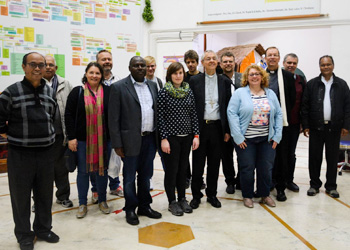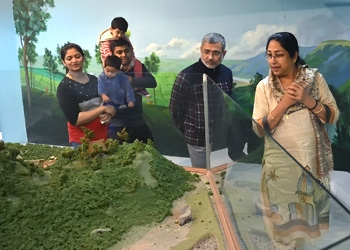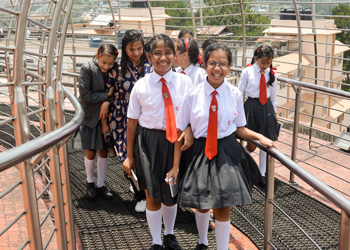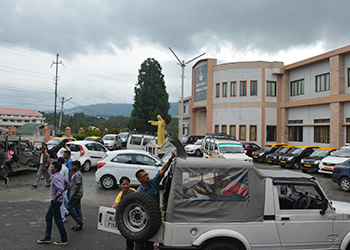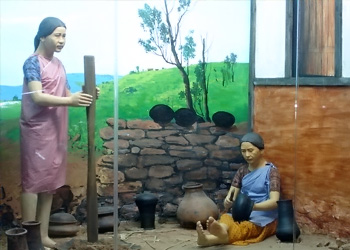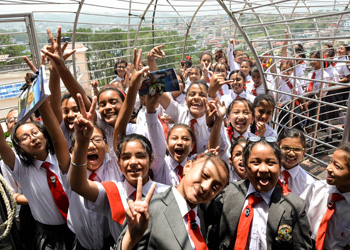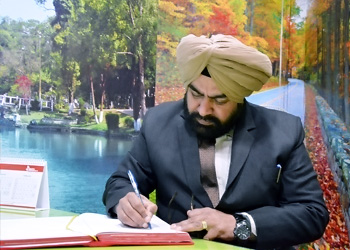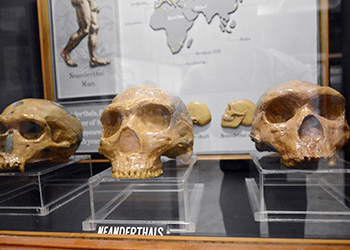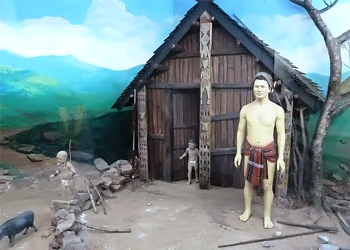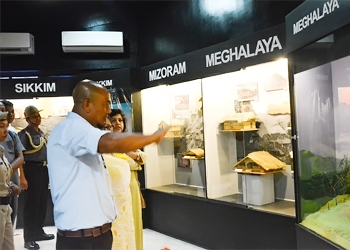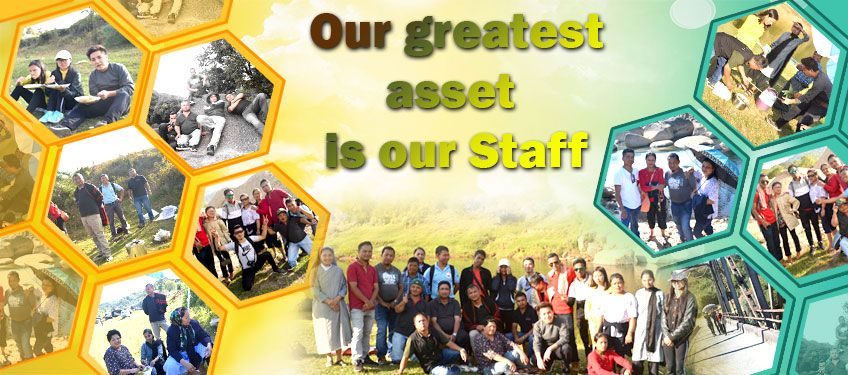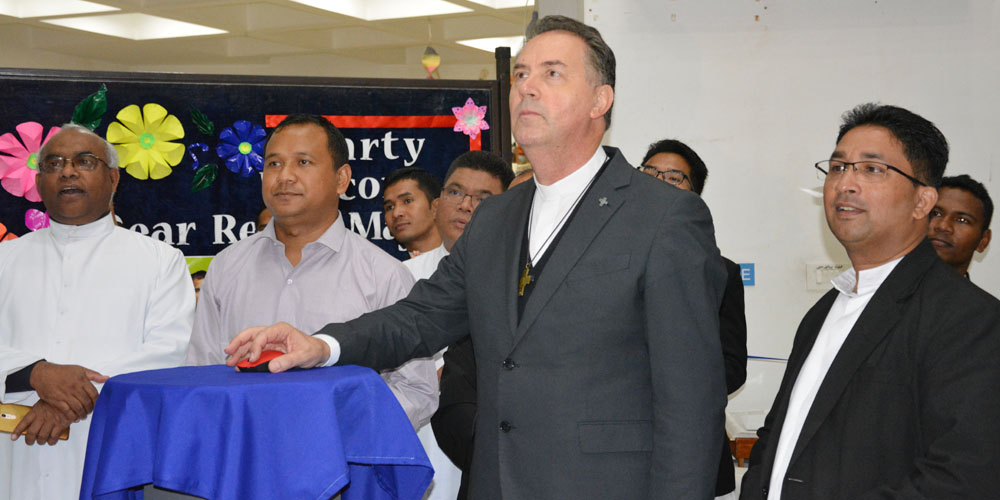Our History
The Museum is part of a much wider reality known as DBCIC (Don Bosco Centre for Indigenous Cultures). DBCIC consists of Don Bosco Museum [of indigenous cultures], Research, Publications, and Knowledge-Sharing with the help of multimedia.
The idea of a DBCIC and especially of the Museum has to be seen in the context of the reopening of the Sacred Heart Theological College (SHTC) in 1976 after a long period of wanderings. With its reopening in 1976, SHTC was fortunate to have Fr. Sebastian Karotemprel SDB first as its Principal from 1976 to 1987 and later on to benefit from his continued presence in the college as professor from 1987 till his death in 2014. This meant nearly four decades of fruitful, creative and dynamic presence in Shillong. Two things have to be noted during these specially productive and active years of Fr. Sebastian. First, he threw himself heart and soul into the theological formation of candidates for the priesthood. Second, with the advantage of having absorbed deeply the missionary thrust of the Second Vatican Council, Fr. Sebastian undertook certain initiatives to give a mission and missiological direction to SHTC.
These initiatives were: first, the launching of the Indian Missiological Review in 1979, (presently known as Mission Today); second, the building of the Otto Hopfenmueller Library which today has over one lakh volumes; thirdly, the establishment of the faculty of Missiology in the 1980s; and fourthly, the founding of the Anthropological and Cultural Museum (today known as Don Bosco Museum).
Speaking about the last-mentioned, namely, the Don Bosco Museum, Fr. Sebastian informs us that the idea surfaced in his mind during his conversations with missionaries like Fr. George Vanni, Fr. Henry Fantin, and Fr. George Kottuppallil. Commenting on it Fr. Sebastian would say that, the Museum would not only preserve the cultural heritage of our peoples, but also serve as an instrument of missionary education of the present and future priests, sisters and religious of the region and would provide cultural education to the people themselves.
In 1985, Fr. Sebastian discussed the idea of the Museum with Fr. George Kottuppallil and other staff members of Sacred Heart Theological College. It took time to spell out the idea, spread it, and gather moral and intellectual support as well as the finance needed to support it. It was only in 1988 that Fr. Sebastian had the occasion to explain the idea to the Don Bosco International Headquarters in Rome (DBIHR).
With the promise of financial support – to start off – from DBIHR the planning and organization were set in motion in the 1990s. Among those who took concrete interest in the project of the museum building were DBIHR’s Superiors General in Rome Fr. Egido Vigano’, Fr. Juan Vecchi and the International Mission Councilor Fr. Luciano Odorico. But the ground work in all aspects was entrusted to Fr. Sebastian Karotemprel who worked with untiring zeal and great passion for whatever he undertook.
The original vision of DBCIC was spelt out in a leaflet published in 1999. We read in it:
“The primary scope of DBCIC is the advancement of indigenous / tribal peoples. In order to achieve this aim, it collects documents and preserves the cultural artifacts of indigenous / tribal population [hence, the 7 storey museum]. It also facilitates ethnographic, anthropological and sociological studies on indigenous communities. Through its language institute, it strives to promote tribal languages in various ways”.
The 93 year old Khasi Priest Fr. Sylvanus Sngi Lyngdoh, [still alive and active] remembers his having had a chance meeting with Fr. Sebastian Karotemprel in Rome. On that occasion their conversation focused clearly on three very important things for the growing Church in the North East: one, a decent library worthy of a theological college that was just going to be re-opened in Mawlai Shillong in those days; two, a missiological journal as a backbone to theological thinking for a Church that is missionary by her very nature; and three, an Ethnographic Museum – decisively anthropological and cultural. That conversation was way back in the Summer of 1976 and in the context of the reopening of Sacred Heart Theological College mentioned above. It must be said to the credit of Fr. Sebastian and as homage to his memory that he accomplished all the three excellently well through sheer hard work and unstinted commitment.
Limiting ourselves especially to the Museum we may note that the laying of the foundation stone of the present seven-storey museum building in Shillong took place in July 1994 when the then Provincial of Guwahati Rev. Fr. Joseph Thelekkatt SDB blessed the foundation stone of the new edifice. The construction of the building was completed by the end of October 2000. Fr. Joseph Puthenpurakal was appointed director of DBCIC on 3 January 2001 in the place of Fr. Sebastian by Fr. Philip Barjo SDB the Provincial of Guwahati. The work on a few of galleries started by Fr. Sebastian was continued by Fr. Joseph. By 2004-2005 there was sufficient number of Galleries ready for the public to visit. New Galleries were inaugurated as and when they were completed. However, the formal inauguration of the Don Bosco Museum by Smti. Sonia Gandhi took place on 5 March 2010. A brief excerpt from her inaugural address may be in order at this point:
“Our north-eastern region is an enchanting one. It is blessed with abundant natural resources and great biodiversity, populated by the most talented and enterprising of people. … India’s distinctive identity as a confluence of many cultures is derived, to a large extent, from the north-eastern states in the Union. In this entire region, there is a colour, a gaiety, a celebration of life in various facets that is found in few parts of the world. Today, young men and women from all over the north-east have earned a name for themselves in diverse fields in India and abroad.
“… But parts of the north-east are still witnessing strife and violence…[Among other things] we also need a massive peace movement, a movement that will replenish the well-springs of harmony and that will create an environment conducive to faster economic development. This will, in turn, ensure that the aspirations and potential of youth are fulfilled.”
“… It is my hope that this Museum will emerge as a premier academic institution and that it will have more than mere academic value to students and scholars. Its larger social purpose will lie in the outreach role it can perform, in the proactive and public role it should adopt in promoting dialogue and in overcoming the forces of discord and violence.”
“… This is how it can serve as a vehicle for mutual understanding and amity. The importance of this Museum extends far beyond this region. I hope that people from all parts of our country will come and visit it to get a deeper appreciation for the many diverse cultures of the North East. The Museum will then become a powerful catalyst for strengthening the bonds that unite our people.”
In 2014 the Museum had some 70,000 visitors. Their number will grow year after year if a climate of peace and tranquility exist in the region rather than too many bandhs and roadblocks which scare away visitors. Today Don Bosco Museum is a point of arrival for most of the visitors to Shillong. People – particularly the youth – are happy to visit the Museum since in it they get a feel of all the eight States of North East of India. Visitors have expressed their admiration for DBCIC/ DON BOSCO MUSEUM in more than one way.






